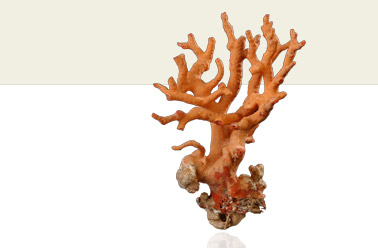
Through MNCN & RJB, ES-TAF houses the top natural history collections (historic, living and frozen tissues & DNA) in the Iberian Peninsula, enabling advanced research in a wide range of biodiversity topics. ES-TAF collections represent a unique resource for the study of two of Earth’s biodiversity hotspots: the Mediterranean Basin and the Neotropics. ES-TAF also includes top-of-the-range facilities and equipment as well as expertise on research in the fields of molecular systematics and population genetics. Approximately 80% of collections are electronically databased, including c. 214,000 specimens imaged and an animal sounds library with c. 55,066 recordings.
ES TAF also offers access to collections and expertise in geological disciplines (mineral systematics, petrology, geomorphology, geo-environmental analysis). New biological research areas are also available to users (e.g., analytical biogeography and global change, ecological modelling, environmental biology and environmental biochemistry, genomics, microbial ecology, geo–microbiology). Genomic approaches such as target sequencing, metabarcoding and genotyping-by-sequencing (RAD-seq) have been recently incorporated to the researchers’ toolset, in collaboration with external providers. In addition, ES TAF is equipped with a laboratory devoted to the handling of ancient DNA (fossil, subfossil and preserved modern but specially delicate material (e.g, historical herbarium and zoological collections or molluscs study collection preserved in 70% ethanol and stored at room temperature), which is rare in Europe; equipment for ultrapure, high-performing DNA (e.g. solid-phase paramagnetic bead technology) and high-sensitivity quantification (QubitR) is also available.
With over 9.85 million specimens, and more than 37,398 types, ES-TAF harbours the most important representative collection of the Mediterranean Basin worldwide, including specimens from the Iberian Peninsula (comprising the Balearic and Canarian Archipelagos) and an important collection from former overseas colonies in Central and South America, Philippines and Africa. Approximately 80% of collections are electronically databased, including c 214,000 specimens imaged, 1.1 million records offering associated data, and an animal sounds library with c. 55,066 recordings. RJB harbours the largest living plant collection in Spain and a growing seed bank of Iberian plants, which, together with greenhouses and growth plant chambers, enables studies on Evo-Devo, reproductive biology phenology, etc. There is also a growing culture collection of fungi.
In addition to fully equipped molecular systematic facilities for handling and amplification of ancient DNA and studies on molecular systematics and population genetics, ES-TAF includes several services that are unique or rare among European systematics institutions. These include:
A) Non–Destructive analytical and imaging facilities: an EM suite combining ESEM, BSE Detector and Catholuminescence spectrometer; a microscope with RAMAN spectroscopy, and a Micro-CT facility, plus a non – invasive technique that uses X-Rays to create 3D models); a Scanning Electron microscope (with critical point drier and sputter coater), fitted for the study of young plant tissues and ancient herbarium specimens, is offered through RJB-CSIC.
B) The Virtual Morphology Lab is equipped with a laser and three structured-light high-resolution 3D surface scanners and a 3D-printing farm (Fused Deposition Modelling).
C) The Physiology Lab is composed of two units: a) Reproductive Physiology, for research of gamete function, fertilisation and early embryonic development processes of mammals in an evolutionary context, b) Animal Ecophysiology, to study mechanisms involved in the adaptation of organisms to the environment.
D) The Chromatography lab allows state-of-the-art analysis of compounds/contaminants in soil and water, metabolic compounds and anions in plant samples, and atmospheric gases. E) The Biological Field Station ‘El Ventorrillo’ includes a respirometry laboratory.
In addition, services for 3D DoD are offered for the study of non-digital specimens through the Virtual Morphology Lab (ViMoLab) at MNCN-CSIC, which is equipped with several specialized scanners, including fast and HD hand-held white light scanners (Artee MHT), suitable for digitisation of large-size objects, complemented with Artee Spider and Space Spider systems (for high resolution of geometry and texture of objects with intermediate size.
Dr Marian Ramos, m.ramos@mncn.csic.es
Madrid, Spain
http://www.mncn.csic.es